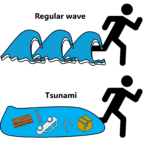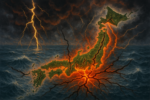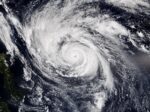
Japan is one of the countries where earthquakes hit frequently.
We feel shake when an earthquake occurs deep in the ground and the waves of the sway reach the surface of the ground.
In Japan, the “magnitude of shaking at a certain point” and the “magnitude of the earthquake itself” are measured separately.
This article describes these magnitudes.
What is “Magnitude (マグニチュード)”?
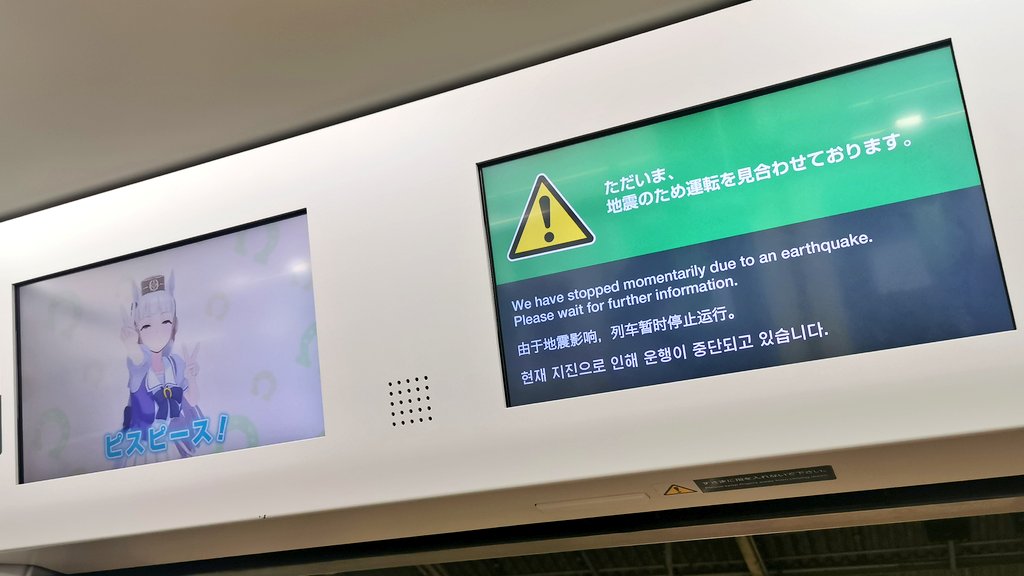
Magnitude (M, マグニチュード) represents the magnitude of the earthquake itself, that is, the energy of the earthquake.
Magnitude has only one number for one earthquake.
The larger the earthquake, the greater the Magnitude.
Specifically, if the magnitude difference is 1.0, the energy of the earthquake is about 32 times.
| Year | Earthquakes | Magnitude |
|---|---|---|
| 1995 | The Great Hanshin-Awaji Earthquake | 7.3 |
| 2003 | The Tokachi-Oki Earthquake | 8.0 |
| 2007 | The Niigataken Chuetsu-Oki Earthquake | 6.8 |
| 2011 | The Great East Japan Earthquake | 9.0 |
| 2016 | The 2016 Kumamoto Earthquake | 7.0 |
What is “Seismic scale (震度, shindo)”?

Seismic scale indicates the magnitude of shaking at a certain location.
Even if it is the same earthquake, the “Seismic scale” will change depending on the distance from the epicenter and the ease of shaking of the ground.
In Japan, the seismic intensity is determined by a number from 0 to 7.
Seismic intensity 5 and 6 are divided into weak and strong, so there are 10 levels in total.
| Seismic scale (震度, shindo) | Situations such as shaking |
|---|---|
| 0 | ・People do not feel shaking |
| 1 | ・Some people who are quiet indoors feel a slight sway |
| 2 | ・Most people who are quiet indoors feel shaking ・Some sleeping people wake up |
| 3 | ・Most people indoors feel shaking ・Some people who are walking feel shaking ・Most sleeping people wake up |
| 4 | ・Most people are surprised ・Most people walking feel shaking ・Most sleeping people wake up ・Suspended objects shake greatly |
| lower 5 | ・Most people are scared and want to grab something ・Unstable objects that are not fixed may fall over |
| upper 5 | ・Most people have difficulty walking without being caught by something. ・Most people have trouble with their behavior. ・Unfixed furniture may fall over |
| lower 6 | ・It becomes difficult for everyone to stand ・The door may not open ・Wall tiles and glass may break |
| upper 6 | ・Everyone can’t stand and everyone can’t move without crawling on the floor ・The body may be blown away by shaking ・Wooden buildings with low earthquake resistance tilts or collapses ・Large-scale landslides occur |
| 7 | ・Everyone can’t stand and everyone can’t move without crawling on the floor ・The body may be blown away by shaking ・Many more wooden buildings with low earthquake resistance tilt or collapse ・Even wooden buildings with high earthquake resistance rarely tilt ・Reinforced concrete buildings with low earthquake resistance often collapse |
What is Difference between Magnitude and Seismic scale?
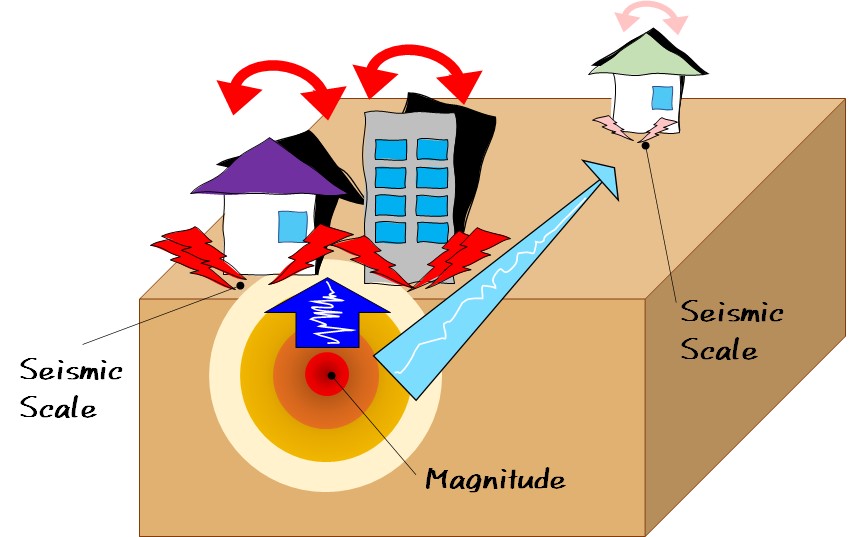
Even if an earthquake has the same magnitude, the shaking will be large near the epicenter and small far from the epicenter.
Also, the larger the magnitude, the greater the shaking.
Finally
If you deepen your understanding of seismic intensity and magnitude, you will be able to respond calmly.
In the earthquake, ensure your safety first!!!
Alcoholic beverage Anime April Architecture August Autumn Building Capital Area Cherry blossom February Flower January Japanese food July Kinki kyoto Local ramen Manga March Nagoya Nature Nightlife Night view October Osaka Photogenic Pink Red Sakura September Shopping Shrine Souvenir Spring Station Summer Superb view Temple Tips Tohoku Tokai Tokyo Torii White Winter


